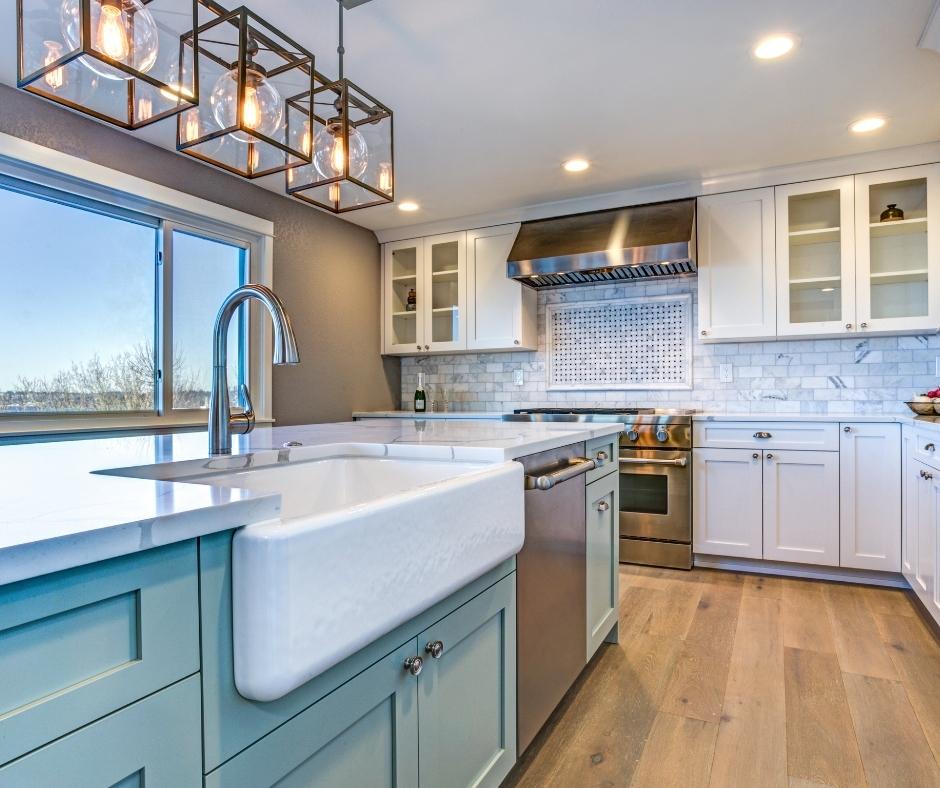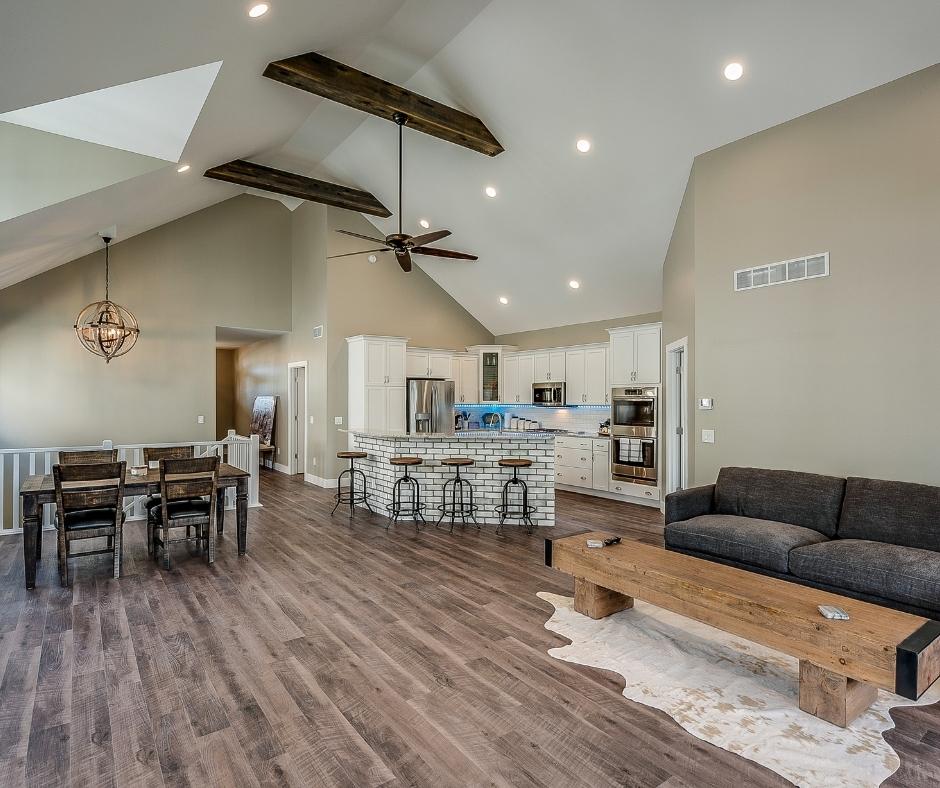If you want to know how to keep the air in your home comfortable to breathe or how long it’ll take to warm a room, you’ll want to know how fast the air flows. That will help you know what your HVAC needs are, or whether a certain room needs two ceiling fans or just one.
A basic measurement you’ll need to know are cubic feet per minute (CFM), which tells you how much air turns over in a specific space. Each room has its own needs depending on how it’s used and how large it is, so there’s not just one number that applies to your entire home.
This article will show you how to calculate CFM and how to figure out what you need in the different rooms in your home. By the end of it, you should be able to make a much better decision when looking for either a central air system or just ceiling fans.
In This Article We'll Discuss
How to Calculate CFM Needed
Every room in your house has different needs when it comes to airflow. You’ll want faster turnover in the air in a room that gets heavy use like a kitchen versus a bedroom, where your time spent is usually more passive.
Before you can figure out how much airflow you need in a specific room, you’ll need to know how to measure it.
Airflow is measured in cubic feet per minute. That represents the amount of air that turns over in a room per minute. The higher the number, the more air that gets moved. Since each room has its own needs, the highest number possible isn’t always the best idea.
Calculating CFM requires two things: knowing the volume of air in the room and knowing how often you need new air to completely replace the air already in it.
We’ll calculate the CFM of a rectangular kitchen, which requires a relatively high turnover of air.
Let’s say the kitchen is 20 by 30 feet with a ceiling that is 10 feet above the floor. Calculating the volume requires that you multiply all three, so 20x30x10.
The kitchen’s space, its length multiplied by its width is 600 square feet. Multiply by the height — 10 feet — to get its three-dimensional volume of 6,000 cubic feet. That is how much air you need to be displaced.
For most kitchens, you want the air turned over seven-to-eight times an hour. That will help you know what kind of HVAC or fan system you need to support it. Let’s multiply that 6,000 cubic feet by eight times turned over an hour for a total of 48,000 total cubic feet moved per hour.
You’re looking for a measurement of minutes, so you need to divide that total cubic feet per hour by 60. The answer is 800 cubic feet per minute. So, you’ll want an HVAC system or fans rated to 800 CFM.
How Much CFM in a Kitchen Do I Need?

Kitchens require quite a bit of turnover in the air for pretty simple reasons. They fill with steam and sometimes smoke, and often the air is filled with the particulates from cooking. They also get warm which, combined with everything else, can make the air feel downright oppressive.
Among household rooms, kitchens rate among the highest when it comes to frequent complete turnovers in air. While a basement might need its air turned over just twice an hour, kitchens can require seven or eight air changes per hour.
A good rule of thumb is that a kitchen should have a system with a minimum CFM of 350.
The precise number, however, will depend on the volume of your kitchen. Most kitchens will have things like islands and lots of counter space in them. Those can take up a lot of space that might otherwise be filled with air. But you just need a good estimate of volume.
There is no specific CFM to look for when figuring out air changes in your kitchen because it depends on the volume of air in it. Smaller kitchens will have smaller CFM needs because the volume of air is smaller.
How Much CFM Do I Need in a Bedroom?
You don’t need to change the air very often in your bedroom. Too much airflow in your bedroom might make it feel too cool and not cozy enough. Changing the air two or three times an hour is a good base number.
Bedrooms are also a little bigger than most rooms because the furniture tends to be a bit bigger. Based on that, 300 CFM is a good starting point. Smaller bedrooms might have a smaller number and bigger bedrooms will have a higher number, but that’s a good estimate.
How Much CFM Do I Need in a Master Bedroom?

Like a regular bedroom, you only need to completely change the air in a master bedroom two or three times an hour. You don’t want stagnant air in your bedroom, but you don’t want to feel like you’re in a wind tunnel.
Master bedrooms are also bigger than normal bedrooms. So, if a regular bedroom has a CFM of 300, assume that a master bedroom might have a CFM of 350 to 400.
How Much CFM Do I Need in a Bathroom?
There are two competing issues when determining the CFM for a bathroom. First, bathrooms are associated with strong smells and humidity. So, you want frequent changes in the air.
Bathrooms are also among the smallest rooms in your house. That means you don’t need to change much air to completely change what’s in your bathroom.
Some bathrooms are small enough that, despite requiring six or seven total air changes per hour, their CFM is less than 50. But 50 CFM is the base number used for fans, so even if your bathroom’s calculated CFM is less than 50, you should buy one that’s 50 CFM.
How Much CFM Do I Need for an Open Layout Home?

While in specific rooms with specific uses, you’ll want to measure your CFM needs according to the room’s usage, you can use the occupancy method for an open layout home.
The occupancy method relies on knowing how many people are expected to occupy the space at any given moment. It’s useful in the case of an open layout home because there aren’t walls to allow for specialized usages. Every room uses the same air.
Figure a base of 20 CFM per person and that you’ll need air ventilation for one person per 150 square feet. The average home is 2,500 square feet.
Dividing the square footage by the amount of space for each person results in approximately 17 people. That might not be the number of people who live in the space, but that’s not important. You want the CFM, not specific occupancy.
Multiplying 17 people by 20 CFM gives you a basic figure of 340 CFM.
Keep in mind that open layout homes are likely to be bigger than most homes because they are specialty designs. But, once you know the square footage, you can figure out your specific CFM requirement.
Conclusion
When purchasing fans or an HVAC system that will work for your home, it’s important to know what each room in your home will need. The basic measurement for that is cubic feet per minute, which tells you how much air can change in a particular room per minute.
Some rooms require more air changes than others, which will have a big impact on calculating CFM. A critical element is knowing the volume of air in the room. Big rooms that require frequent changes will require powerful air systems.
That might make sense, but knowing the specific figures help shape how much you need to spend. Hopefully, this article has helped you understand how to calculate that figure on your own. If it did, we’d love a comment or for you to share it on your social media networks.

